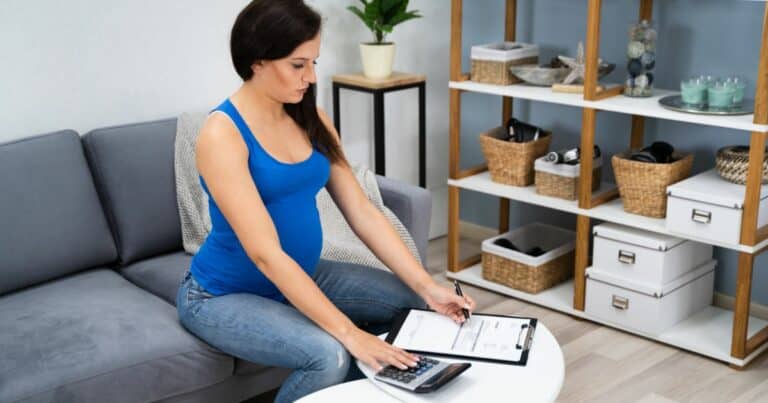
Contents:
It’s essential to separate the myths from the facts regarding bankruptcy. While becoming bankrupt is a serious matter and shouldn’t be taken lightly, it can be the best solution in some situations and help ease unbearable financial stress.
So, here’s a spoiler alert:
‘Bankruptcy doesn’t usually impact your family as a whole. Many people aren’t aware that if your partner becomes bankrupt, you won’t automatically become bankrupt by association. Instead, many people tend to incorrectly assume that their bankruptcy will somehow be extended to their partner, parents or children.’
There’s a lot to understand when considering bankruptcy
For starters, it’s important to understand the kind of debts covered and how long this option will affect you.
The types of debt cleared by becoming bankrupt are provable, unsecured debts. An unsecured debt is a debt that isn’t secured to any assets. Examples of provable, unsecured debts include credit cards, unsecured personal loans and overdrafts, most tax debts and shortfalls owing after assets like property or cars have been sold. Some examples of secured debts include a mortgage or a car loan.
How long does bankruptcy last?
Bankruptcy typically lasts for three years and one day with it staying on your credit report for another two years after discharge (five years in total.)
A bankruptcy record will also be maintained on the National Personal Insolvency Index (NPII), a register held and maintained by the Australian Government.
Further reading: Single parent debt help: 7 Simple strategies that work.
How assets are treated around bankruptcy
Certain assets are protected under the Bankruptcy Act, while others aren’t. Examples of assets that are usually protected include:
- Standard household contents and furniture
- Most superannuation funds
- Tools used to earn an income worth up to $3,800 and total vehicle assets used primarily for transport worth up to $8,000
For a car under finance, the $8,000 threshold applies to the equity in the vehicle.
Now, property is one of those assets that aren’t ordinarily protected. We’ll look at an example to better explain how unprotected assets are treated and how bankruptcy works.
Example of Dan and Claire
Let’s take a family who has two children under the age of ten. Dan* has recently become bankrupt and earns around $120,000 a year. His wife Claire* is a full-time mum to their two young children.
Dan and Claire jointly own their property and have around $40,000 equity combined, i.e. the house is worth around $440,000 and they owe around $400,000 on their mortgage.
When looking at a property within the context of bankruptcy, we’re generally focusing on the portion of the house that Dan and Claire own. That amount is relative to the equity which in this example, is around $40,000 in total. Since the house is jointly owned, Claire and Dan each own $20,000 worth of equity (i.e. combined equity divided by two owners).
By becoming bankrupt, Dan’s half of the property (I.e. his $20,000 of equity) became an asset of his bankrupt estate. Because Claire isn’t bankrupt, she’ll still own her $20,000 share.
When you become bankrupt, a Bankruptcy Trustee is appointed to manage the administration of your bankrupt estate. If you happen to own assets that aren’t protected, your ownership of these assets shifts from you to your trustee.
In Dan’s case, his trustee stood in Dan’s shoes and became a legal co-owner of the house. Dan’s trustee then had an obligation to realise the value of the unprotected portion of the house so that the money could be made available to Dan’s bankrupt estate.
One of the options available to Claire was to join Dan’s Bankruptcy trustee in selling the property. Had she gone down this road, she would have received half of the proceeds after the mortgage was paid out and less the costs of selling the house.
Instead, Claire elected to purchase the trustee’s share of the property at market value for around $20,000. Ultimately, this transaction removed Dan and Claire’s house from Dan’s bankrupt estate, allowing Claire to hang onto it. The money raised for Dan’s share of the property then went into his bankrupt estate to benefit his unsecured creditors.
Another thing to understand is that your earnings will determine if you need to make an ongoing financial contribution to the estate during the three years of bankruptcy.
The income calculation comes from the Bankruptcy Act and many factors come into play such as salary packaging, fringe benefits, child support payments and the number of dependants that the bankrupt person supports. Based on Dan’s income, the amount payable was around $6,000 per year.
The highly dramatised TV version of bankruptcy where bailiffs often turn up to your house seizing all of your worldly possessions isn’t the reality. For starters, standard household contents and furniture are protected under the Bankruptcy Act.
Regarding your car, you can own combined vehicle assets used mainly for transport worth up to $8,000. For vehicles under finance, the threshold of $8,000 applies to the total equity in the vehicle.
In Dan and Claire’s case, bankruptcy helped them clear a crippling amount of unsecured debt. For the first time in years, they were finally able to breathe again, enjoy quality time with their kids and start planning for a brighter future.
Conclusion: How will bankruptcy affect my family?
For many, choosing to go bankrupt can positively impact the family, and thousands of Australians rely on this option every year.
Always ensure you do your research. You may also want to seek help from a suitably qualified and experienced professional, as it’s crucial to understand how bankruptcy will affect you.
*names changed to protect privacy













